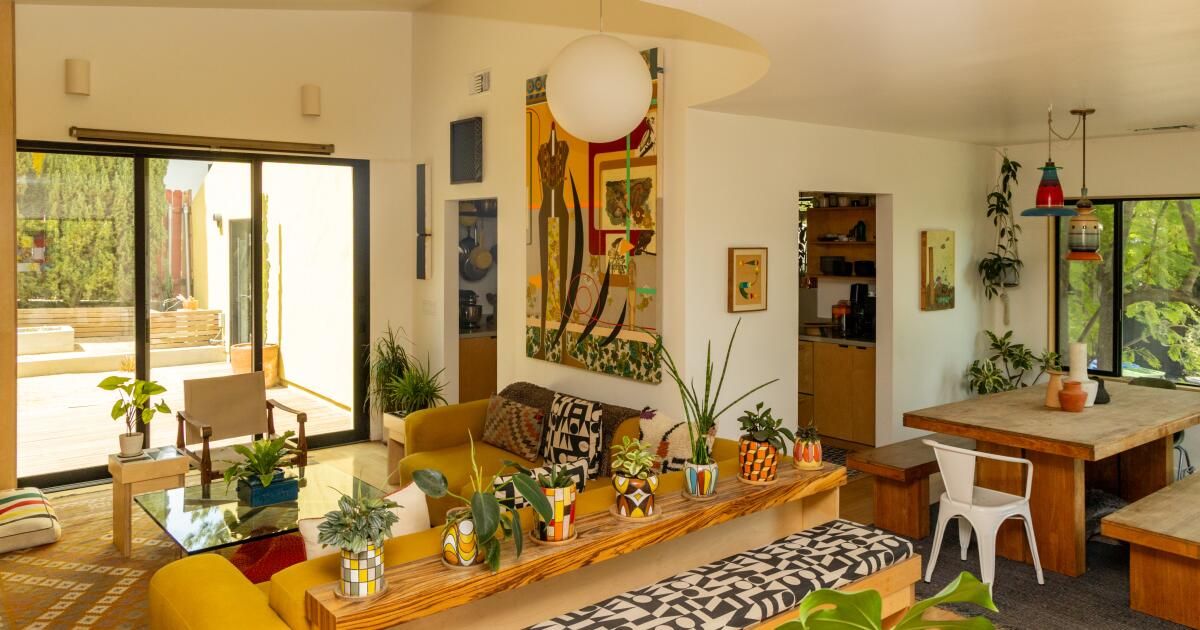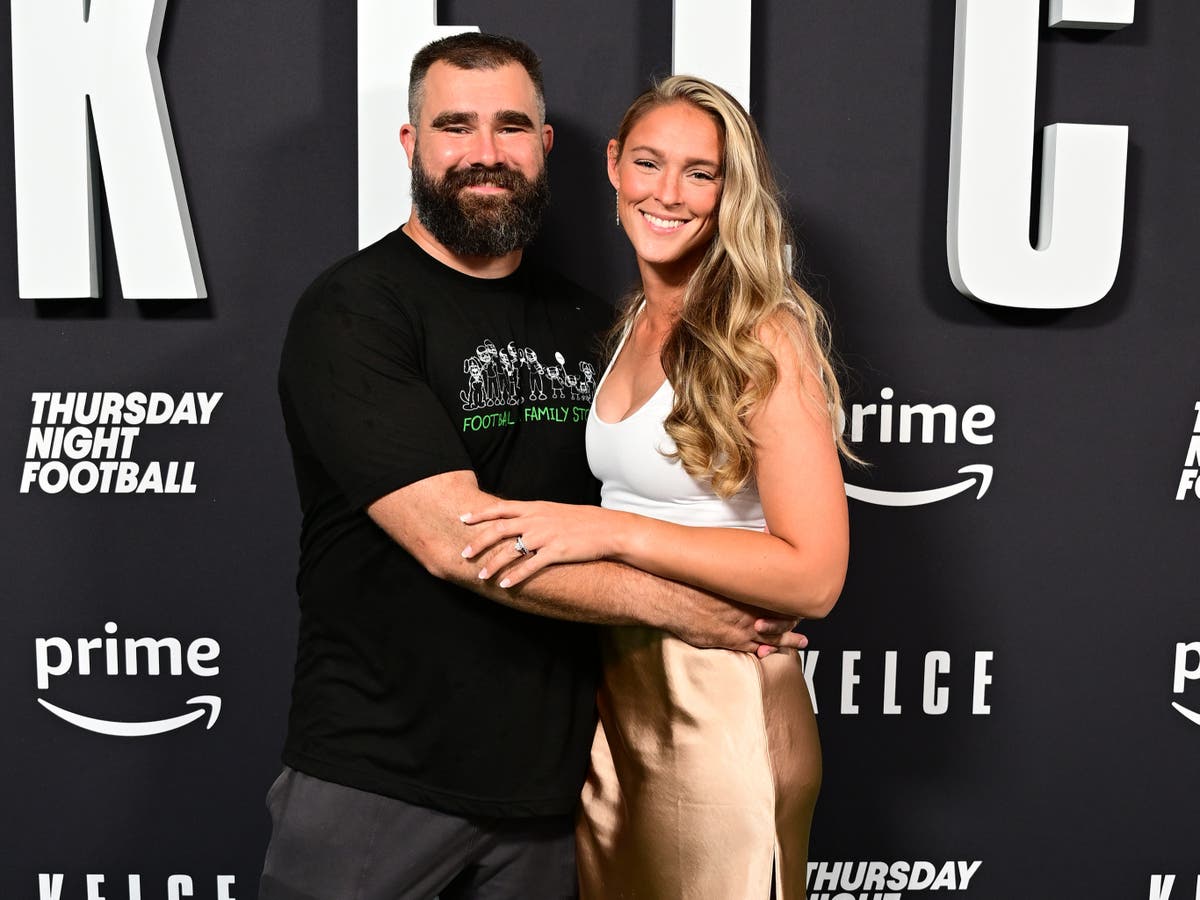Antonio Adriano Puleo had no intention of renovating his traditional 1946 bungalow in the Glassell Park neighborhood just north of Mount Washington, but after consulting with architectural designer Ben Warwas, who told him he could transform the house into a “forever home,” the artist changed his plans.
“I originally wanted an ADU,” Puleo said of adding an accessory dwelling unit to expand the art studio in his garage. “For me, it was about having a bigger studio and being able to have collectors and curators come to the studio.”
However, as Warwas explored the property for the two-bedroom corner house and the designer had previously designed and built a wooden deck in Puleo's backyard, he began to imagine a new narrative for the spaces.
The Glassell Park home before renovations.
(Ben Warwas)

The exterior of the house and ADU is now painted bright yellow. There is also easy access to the outdoors.
“The living room wasn't big enough, and it featured a huge red brick fireplace that had doors on either side, which led to the backyard,” said Warwas, who met Puleo when they were undergraduates at Massachusetts College of Art (now called Massachusetts College of Art and Design). “To access the outdoors, you had to walk up concrete steps to a covered patio.”
Along with a third door from the kitchen, the house's entrance to the backyard was awkward at best.
After touring the property, Warwas proposed some subtle changes: adding a 250-square-foot ADU to the garage, removing the fireplace and raising the ceiling height in the living room; adding a loft room in the attic; and redesigning the exterior of the house.

The front of the 1946 house remains the same.
“It was a small project, but there were a lot of problems with the house,” Warwas said. “I thought, 'Why don't I come up with four different things and he can pick two or three of them?' He chose all four.”
Puleo, 49, bought the bungalow in 2010 for $387,500 after seeing an ad for a two-bedroom home “priced well for a quick sale” in Glassell Park. Although only 1,000 square feet in size, the home offered a backyard for their dog and a detached garage.
“The garage was really the draw,” Puleo said. “The thing about the house that attracted me was that it had a space that could be a studio.”
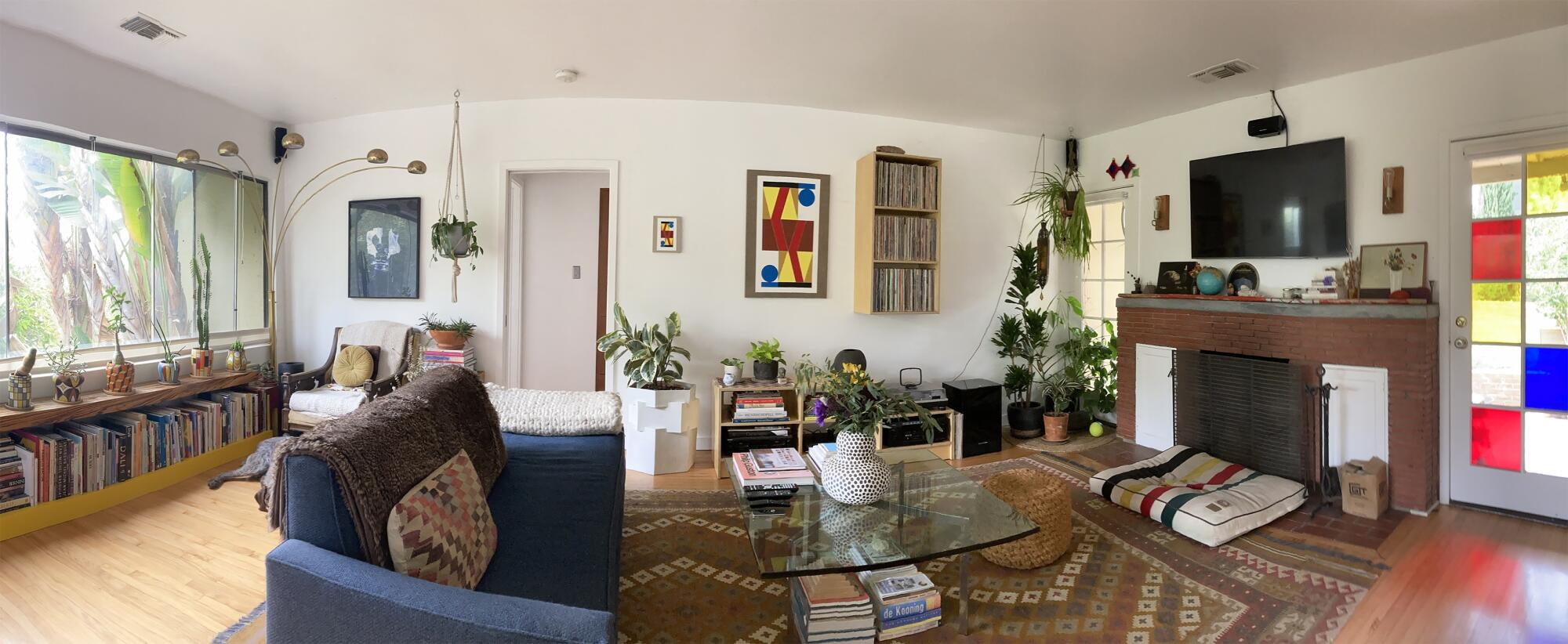
The living room of Puleo's Glassell Park home before it was downsized.
(Ben Warwas)
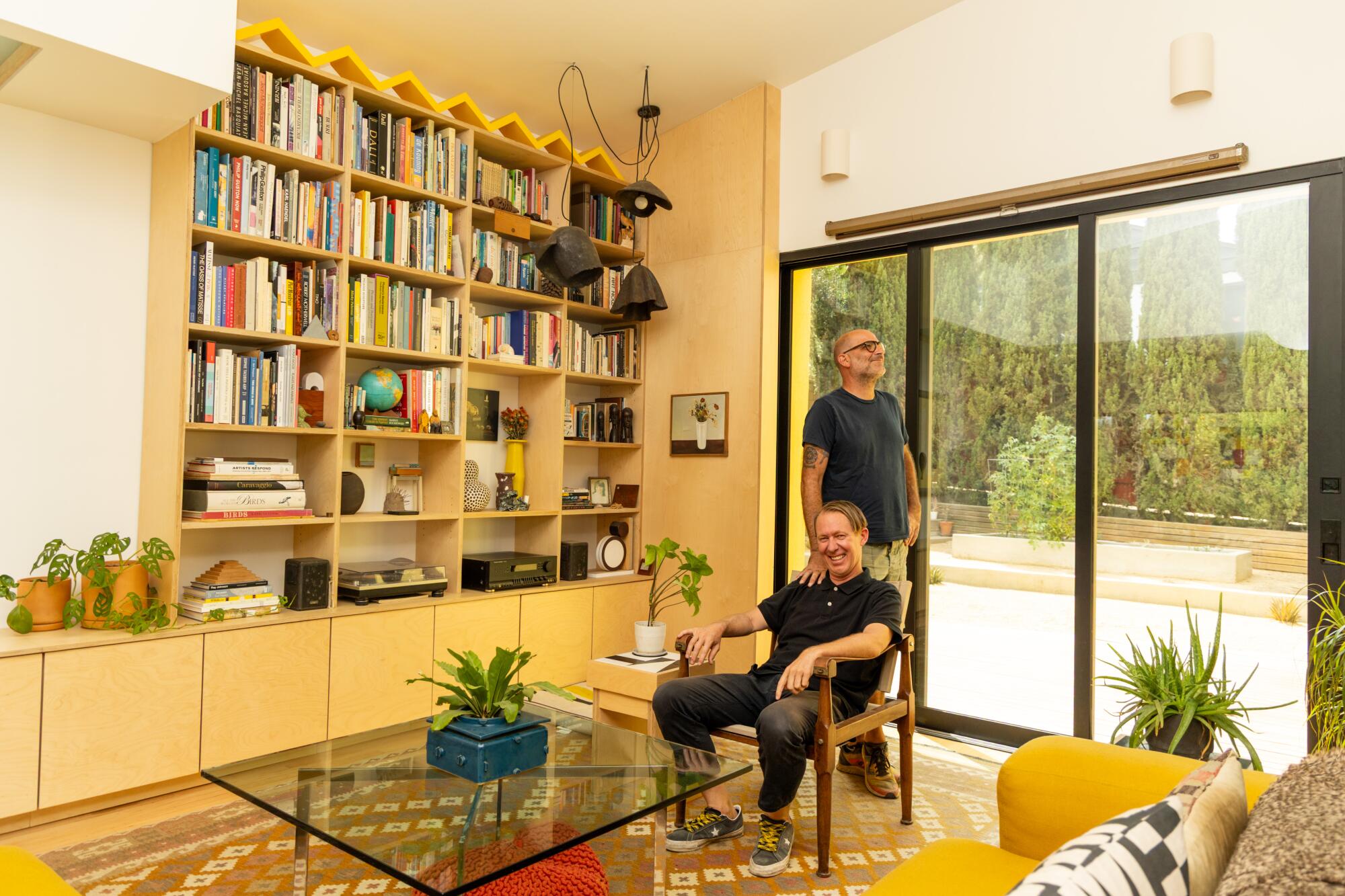
Puleo, standing and Warwas in the living room today. “We both love design,” Puleo said of his former friend.
Shortly after purchasing the house, Puleo renovated the kitchen and bathroom, opening up the wall between the two spaces and widening the kitchen door. “There were so many doors,” he said of the compartmentalized floor plan. “Doors in the kitchen; doors in the dining room.”
Still, it wasn't easy to get to the garage, which housed his art studio and adjacent laundry room. “I was always frustrated with the house because it wasn't maximizing the space efficiently,” Puleo said. “The studio was separated and we had to enter through a door.”
And so the image change began.
Warwas tore out the fireplace and extended the living room by six feet, adding an elegant Fleetwood sliding door that provided instant access to the backyard. Next, he raised the living room ceiling and added a sculptural curve that completely transformed the living space.
Because the house had a complex roof and an accessible attic, Warwas transformed the attic into a loft that Puleo uses as his master bedroom. (The two rooms on the first floor are used as a den and gallery space/guest room). Thanks to high ceilings and a new skylight, the attic now floods the center of the living room below with natural light.
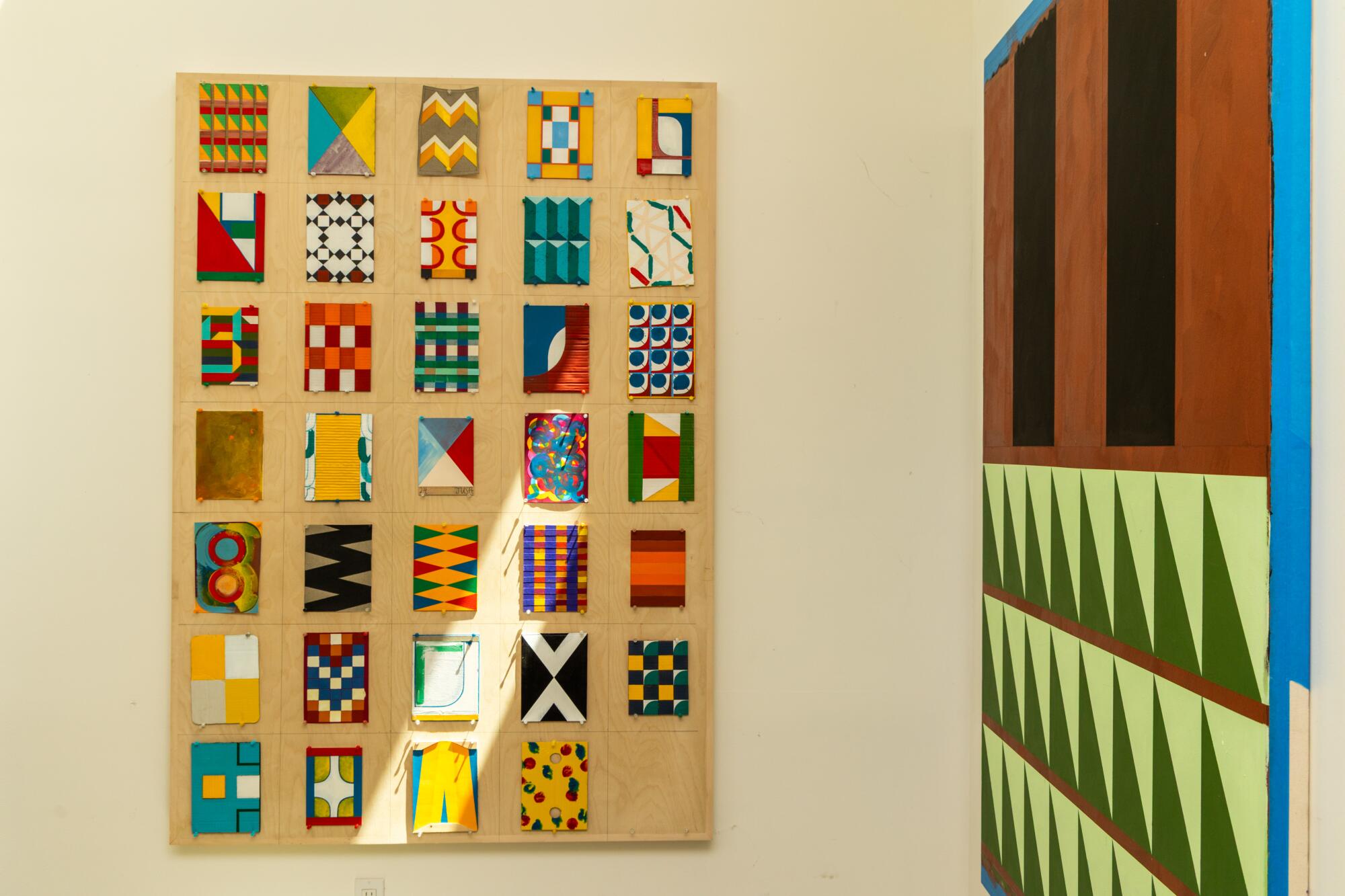
Puleo's printed canvases hang in the ADU.

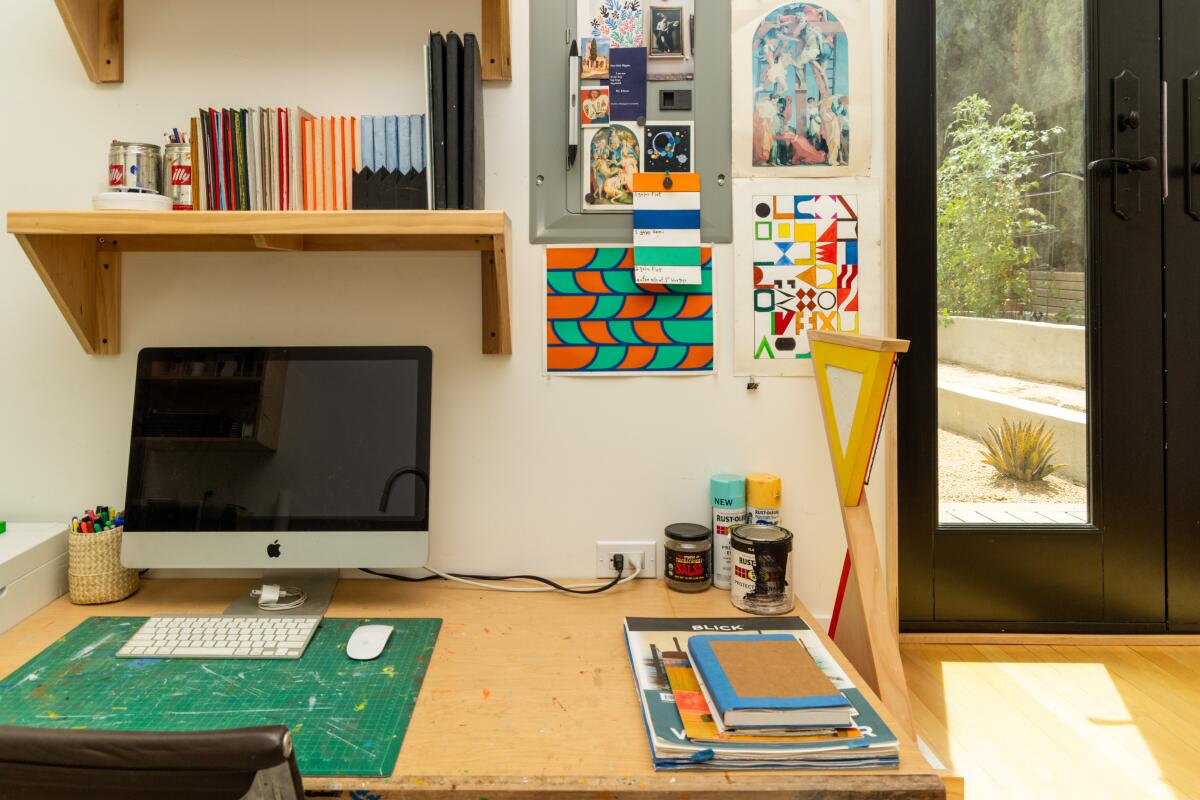
The ADU, which is attached to the garage and just six inches from the main house, features a kitchen, bathroom and living room. Puleo is using it as part of his art studio.
“The small adjustments totally transformed the house,” Warwas said.
In the garage, Warwas designed an ADU that can function as an art studio or rental, with a small kitchen, bathroom and enough space for a bed. The ADU's design was carefully considered to maximize space and light, with a skylight and tall window flooding the space with light.
A level shift offers a dramatic experience when you enter the ADU, as the floor drops below the art studio and the ceiling rises, creating a feeling of spaciousness.
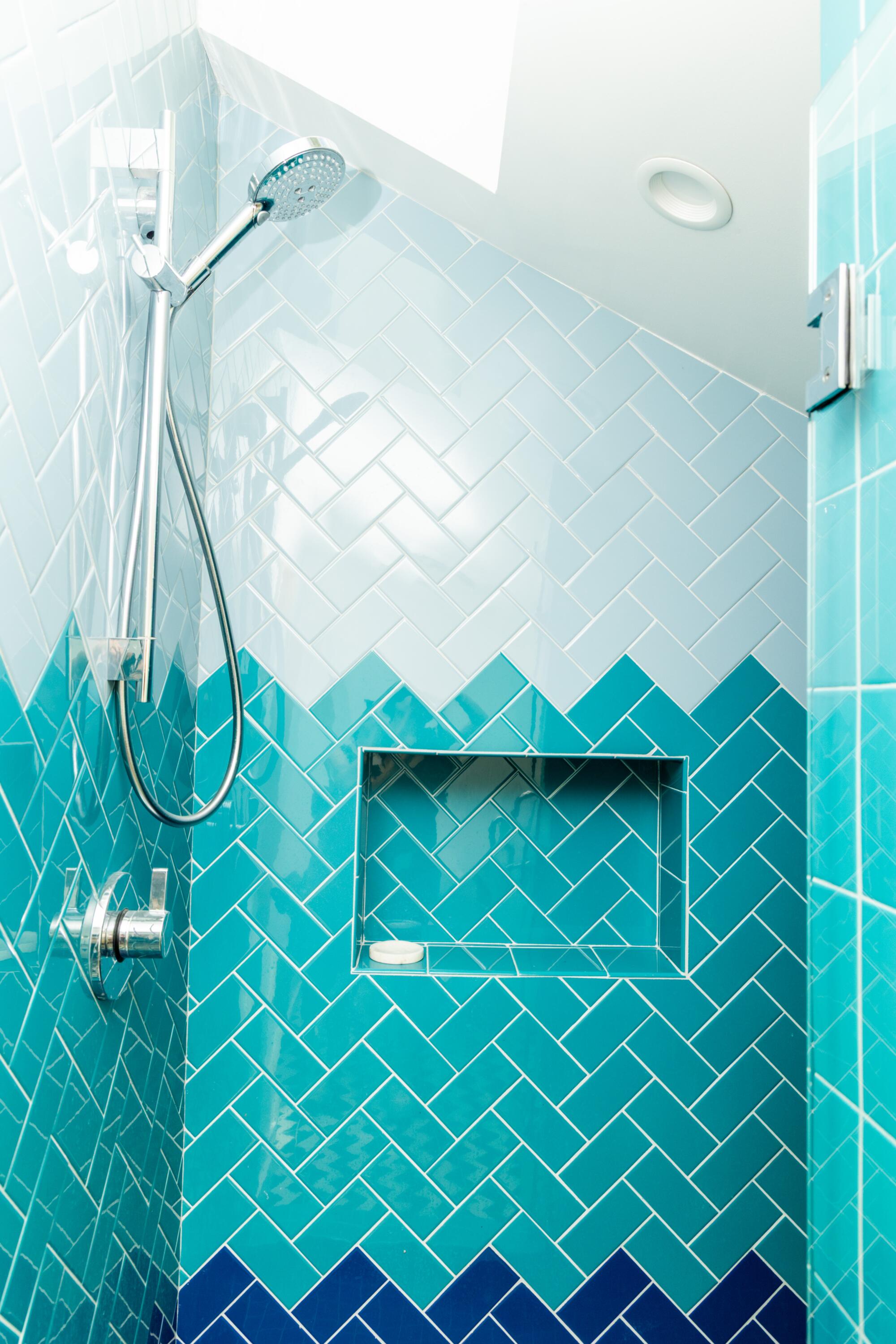
Puleo chose bright blue Daltile tiles for the ADU shower.
The living room of the main house is now open and airy, with custom cabinetry and millwork by James Melinat showcasing Puleo's self-made artwork and pieces he has collected over 30 years, including ceramic pendants by Torbjörn Vejvi and Courtney Duncan, Vessels by Bari Ziperstein and Pilar Wiley, and paintings by Patricia Fernndez and Steven.
The living room fireplace is gone, but the wood mantle remains atop a console behind the couch, adorned with a series of colorful ceramic pots by Ashley Campbell and Brian Porray of Happy Hour Ceramics.
“Ben and I have known each other since we were in college,” Puleo said, emphasizing their long-standing relationship and the collaborative nature of their process. “The fun thing about the project is that we did a lot of back and forth in terms of communicating shapes and forms. We both love design, and Ben does a great job of using traditional materials in a way that lights them up and increases the dynamics of a space.”
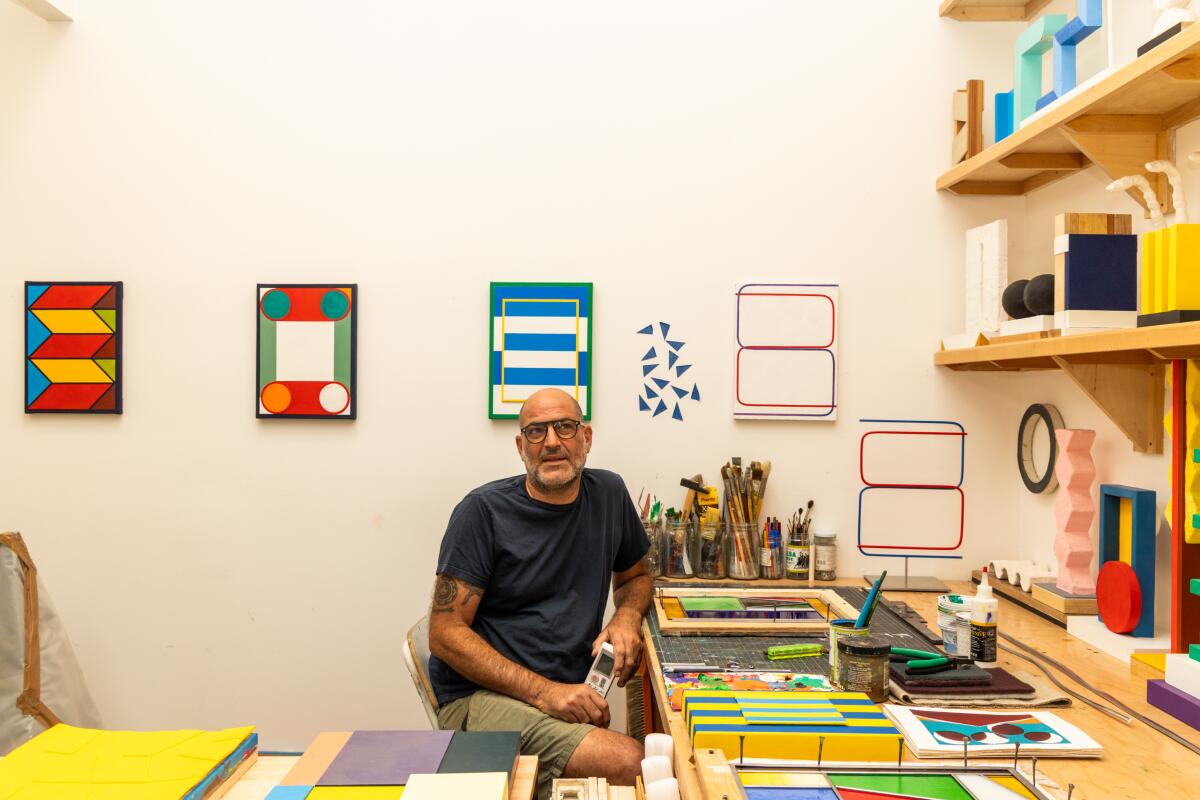



Puleo's art studio, a former garage, rests a few steps below the new ADU.
On a recent visit, Warwas was still fine-tuning home improvement possibilities. “You could put a stackable washer and dryer in here,” he suggested to Puleo as they stood in the hallway. (Puleo had moved the appliances from the laundry room in the garage to the basement of the main house.)
Likewise, Warwas appreciates Puelo's curatorial skills. “He's made his home so personal,” Warwas said of his friend, who, for the past year, has featured the works of local artists in one of the downstairs rooms, which served as an art gallery.
“It's an incredible house,” Warwas said of the interiors, which enhance the artwork and make visitors feel connected to the space.
“People often take notes when they come to visit,” Puleo said of his art collection.
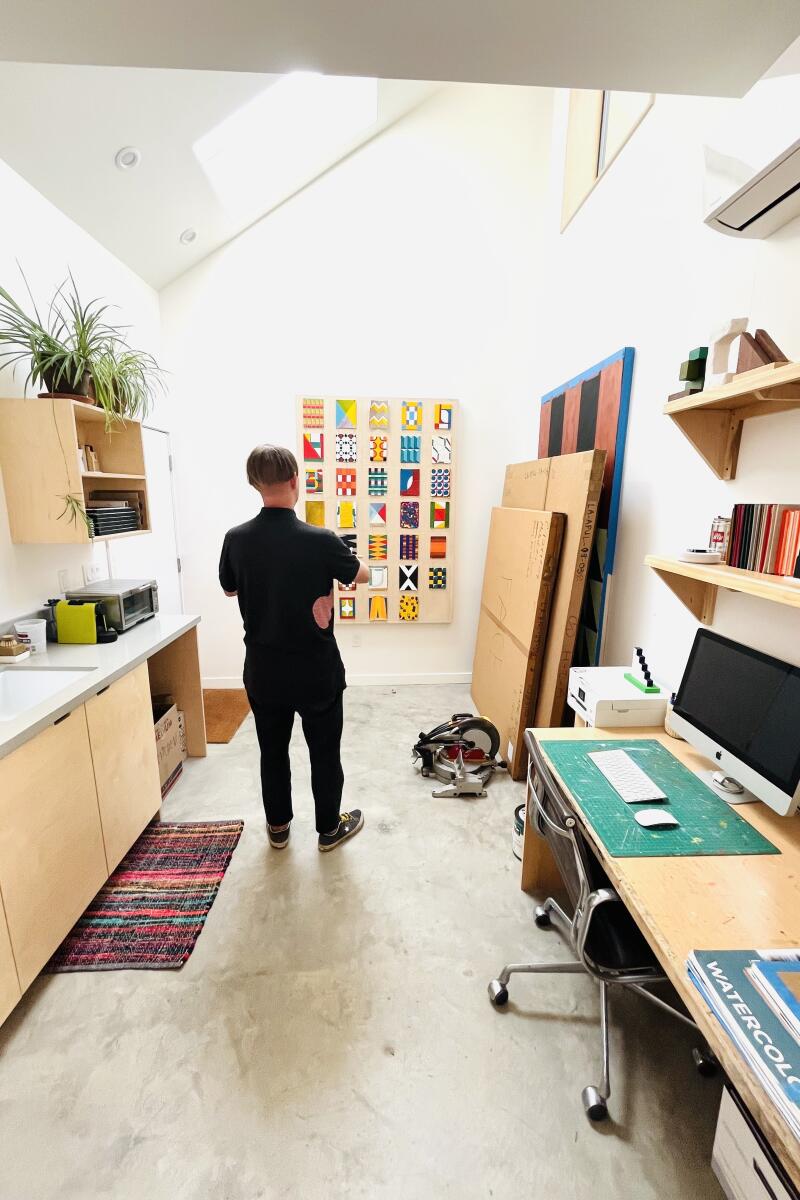

1. Designer Ben Warwas sits inside the 250-square-foot adu, which features a tall window and skylight. 2. In the former garage, stairs from the art studio lead to the ADU and bathroom. (Lisa Boone/Los Angeles Times)
From the sidewalk, the traditional stucco bungalow looks like so many others in the neighborhood. But step up to the backyard, past the colorful paintings, textiles, tiles, stained glass and ceramics and the new rear exterior, painted a bright yellow, and it's like a completely different property.
“The front of the house didn't change, and the back of the house is totally different,” Warwas said of the exterior, which reminds him of a piece of paper that has been cut and folded. “It's a fun time.”
That he was able to totally transform the house without adding a lot of square footage is not lost on him. “It creates a landscape where you can travel back and forth, and the garden is now much more part of the house,” Warwas said. “The yard got smaller, but it feels bigger.”
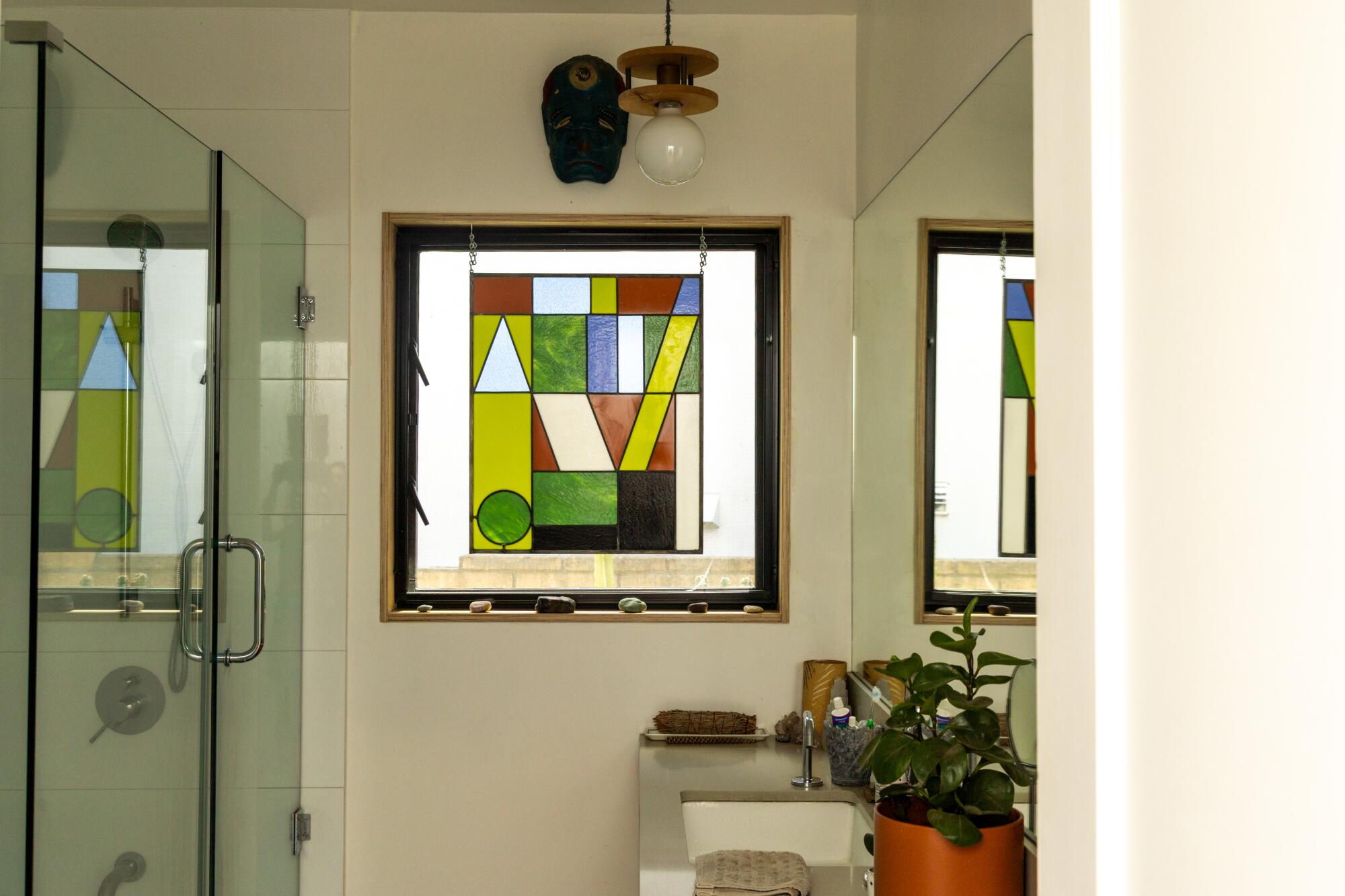
A stained glass panel by Puleo hangs in the bathroom.

Even though a $95,000 ADU addition ultimately turns into a $320,000 overhaul for the property, Puleo is happy to have the flexibility that comes with living in a home with two separate spaces.
“I could add a raised bed and live in the ADU and do art and rent the house out if I wanted to,” Puleo said. “It would allow me to go back and forth between the east and west coasts and teach and be with my family in Boston.”
As he sat carrying everything from his dining room table overlooking the San Gabriel Mountains, the artist said, “The house is super efficient now. This is a magical space.”
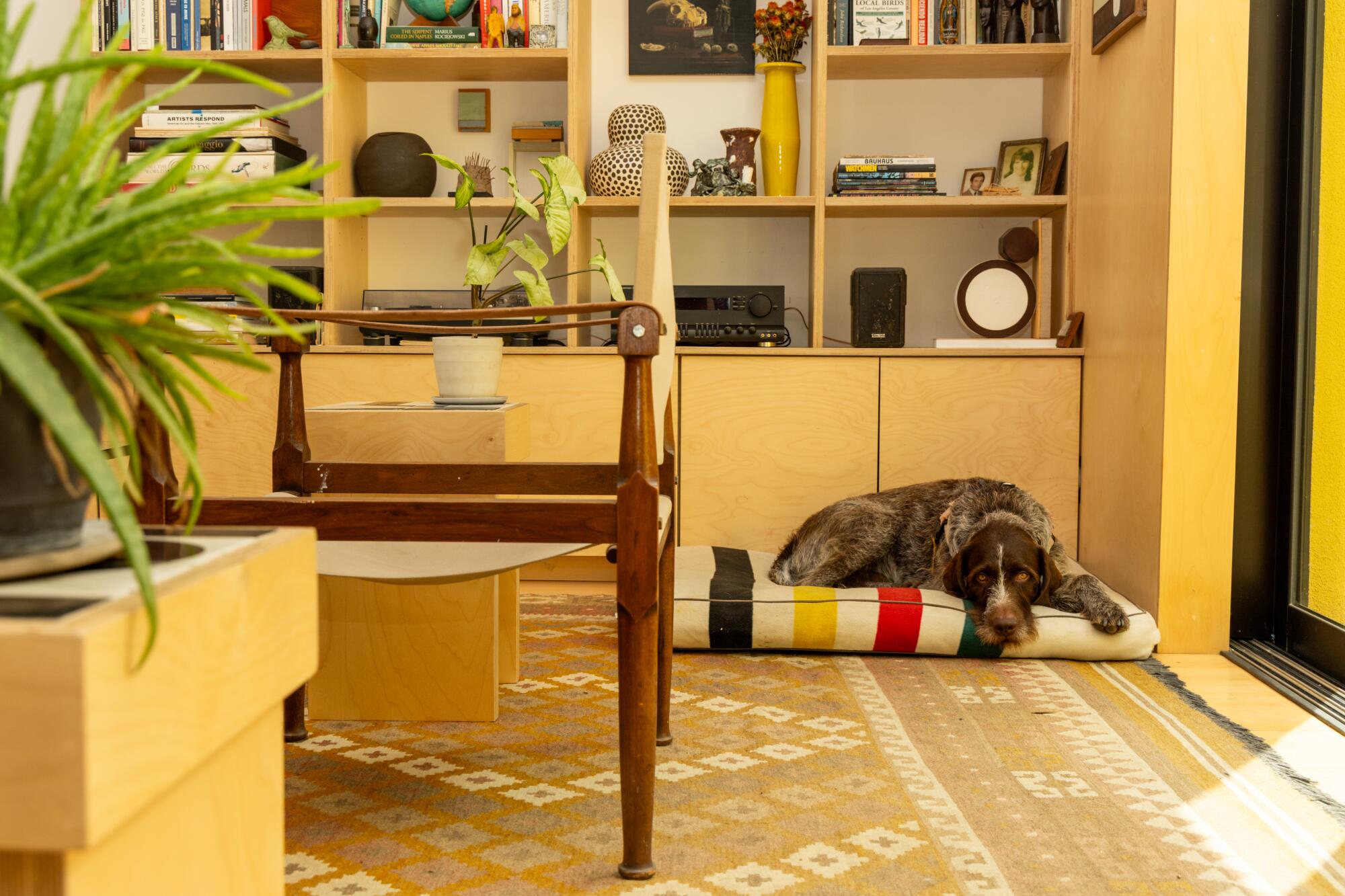
Puleo also chose colorful textiles for her dog Ono's bed.

